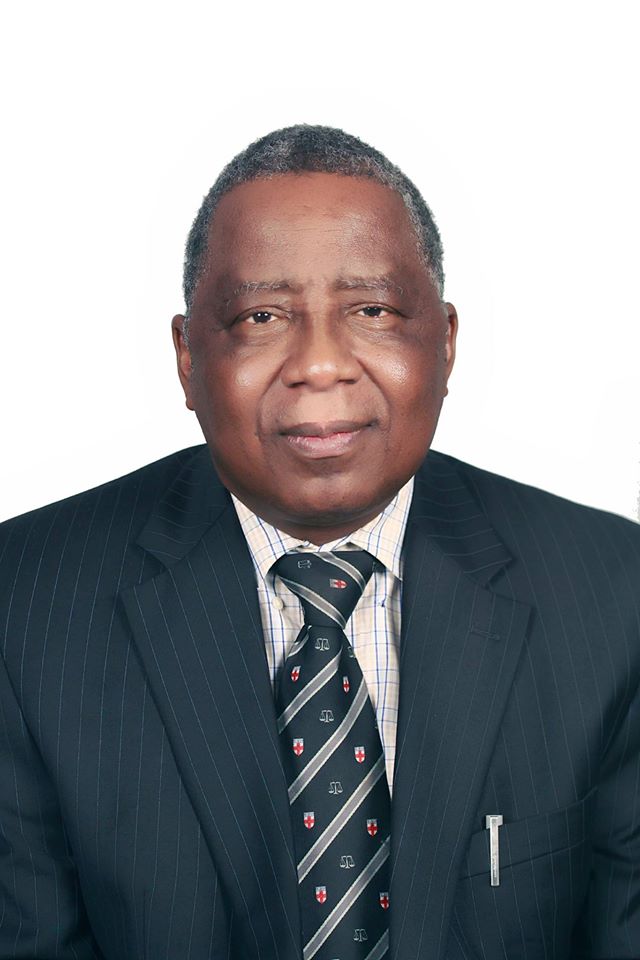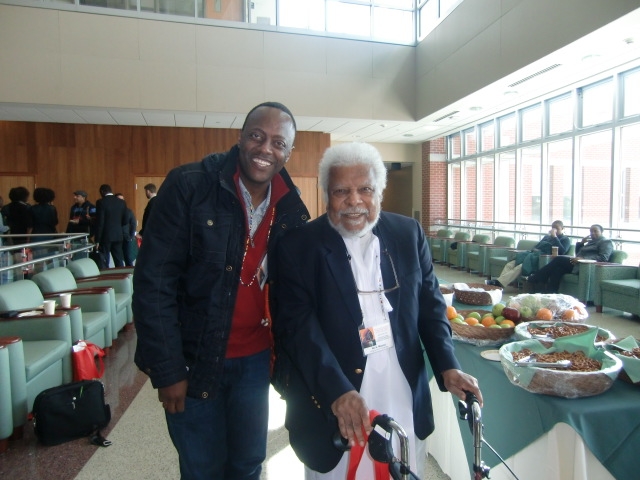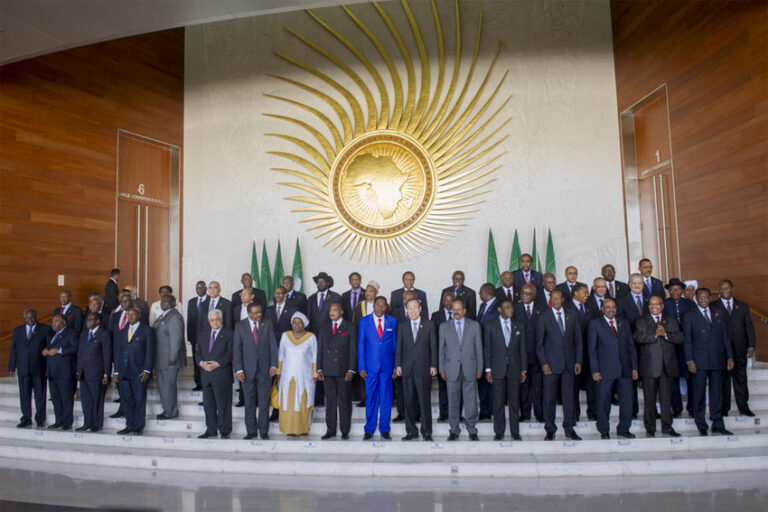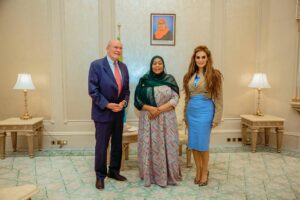Professor Ali A. Mazrui: A study of an African Scholar with Global Significance
December 15, 2014
 Professor Ali A. Mazrui has left our world and now resides in what he once described as “After Africa.” In writing this brief essay on the man and his works, my mind is directed by a number of books written during his lifetime. Each book In his catalogue of essays and comments about Africa and the world corresponded with what I once talked about some thirty four years ago at the 1980 annual meeting of the African Studies Association. At that time, when Ali was being examined for immediate and global attention among Africanists, I suggested that, those who had the determination and the endurance to look at his essays and followed his train of thought, were destined to journey into what I called a galaxy of planets of insights and illumination. That expectation was first trigged by the first chain of books and essays now called Mazruiana.
In writing about Ali and his works, I intend here to do a number of things to shed some light about the Man who just left us in a moment of shock and sadness. Drawing from my Senegambian background, I am going to deploy our ethnic art of staging the biographies of individual members of society. In both the Wolof and Mandinka narratives about life and death, the age-grade system of profiling members of society proves to be instructive. Among both the Mandinka and the Wolof, the human being can be categorized through stages of development from the womb to the grave.
First of all, among these two groups, who are a part of minimally six most powerful ethnic groups that formed the demography and ethnography of the Gambia and by extension Senegal, the lowest level of membership and socialization is the Din-Din category for the Mandinka, and Haliyi for the Wolof; Kambano/Wahamande as the post adolescent and socialized member of the society; and finally, one evolves into the top level of membership in society. This is to say, you get elevated to the status of Kebba for Mandinka and Mak for Wolof.
By drawing from this scheme of identifying and describing members of society, one could here argue that Ali was an Afro-Arab who went through the stages of development noted almost all over the world by different languages and cultures in terms of measuring your contributions to the human conditions.The reason I decided to deploy the anthropological tools of these two groups from my area of origin is to translate how Ali is perceived by our people. Here is a man who grew up in colonial Kenya, where White power ruled and the English language became the badge of social assimilation and the dominant currency of power and exchange.
In analyzing Professor Mazrui, we can focus on him as a young teenager in Kenya and how his ethnic and cultural background combined to define his role and place in Kenyan society. Truth be told, both Ali and those who wrote about him have discussed his Arab roots and how this background explained how he felt about the history of his Swahili-speaking people in Mombasa. Five things need to be addressed in this narrative.
First of all, as a Din-din or Halibe, Ali was raised just like his Senegambian counterpart. Exposed to traditional African languages and cultures, Ali too became familiar with the mythologies and traditions of his people. Just as the Senegambian child learned to develop a command of Mandinka or Wolof, Ali too embraced Swahili and Arabic. Here is a parallelism between Ali and his Senegambian counterparts.
Exposed to two major civilizations and cultures, Ali and his Senegambian counterparts learned their mother tongues as well as those of their colonial masters. For the Senegambian who shared much in command culturally and linguistically, the different colonial masters put forward French and English as rival cultural tools in advancement of their political control. Because of the primacy of English, the Gambians therefore had more in common with Ali in terms of British colonial legacies.
Gambian economist and poet, Dr. Tijan Sallah of the World Bank, who had an opportunity to respond to Professor Ali A. Mazrui when he came to Howard University as the keynote speaker when Howard University conferred the lifetime achievement award to Professor Sulayman S. Nyang, reminded that audience and elsewhere how the Gambians defined themselves separately from their Senegalese cousins, who speak French and other similarly shared languages.
As the first point of analysis about Ali as a young Swahili-speaking Kenya, it must be asserted here that as a Din-Din or Halibe in the Senegambian narrative, he too faced the challenges of English and Arabic. Since both Ali and his Senegambian counterparts are products of Arabic and Islamic cultural training, one could argue here that Ali’s concept of triple heritage had its origins in this common pattern of socialization between two or more cultures. Affected by Islam and the Arabic language, Ali mentally travelled in the same domain as Senegalese scholar, Cheikh Anta Diop who came from a prominent Muslim scholarly family in Senegal. He too recognized the impact of religion in African thought, but his lines of reasoning were not necessary driven by Islamic metaphysics. Rather, for Diop, the ancient Egyptian legacies long lost by Africans warranted immediate retrieval.
What is striking to me is the fact that, when Ali went to Senegal to underscore the relevance and impact of his triple heritage in Africa, his visit to Touba, the spiritual center of the Muridiyya Sufi order, served as a major bone of contention. Indeed, no one can define Islam in Senegal without the murids as faithful companions of Senegambian Islam.
The second point that deserves attention in this analysis of Professor Ali A. Mazrui and his works is the transition from being a Din-Din/Halibe to being a Kambano/Wahamande in Kenyan society. In reading the writings of Ali and others who commented about his life and times in Kenyan society, one can see how British colonialism shaped his perception of the world. Learning the English language opened new doors of opportunity for him. The role of the British colonial governor in his education is part of his Kambano phenomenon. At that time, the young Mazrui, who spoke Swahili and had some familiarity with the Quranic Arab deployed in prayers and other related rituals, was now attracted by the British center of cultural gravity.
What needs to be emphasized here is that, Ali like his Senegambian counterpart s went through the colonial assimilation process. Certainly, his education in English and his engagement with an English spouse sent signals of cultural assimilation. This cultural development on the part of Ali Mazrui paralleled the life and times of Cheikh Anta Diop and Leopold Sedar Senghore in Senegal. Both in Senegal and in the Gambia, we had highly educated Africans who came back home with a white wife. As a Kambano/ Wahamande, who is sufficiently trained in the ways of the ancestors, both Ali and his Senegambian counterpart, went to the Western world prepared culturally and returned home undamaged.
In looking into the story of Professor Ali A. Mazrui, it is important for us to take a closer look at the third factor in this equation. What is this third factor? It deals with the transition from being a socialized adult in one’s culture to being exiled abroad as a Kebba. Ideally, Ali would have loved to spend his life in Africa. The transformations in his life rested in the hands of the political leadership of his country. Unlike many Kenyan, East African and African contemporaries, Ali was not politically connected to run for office in Kenya. Rather, history decreed that Ali would be a major literary force in Kenya and beyond, and his impact would be felt .not only through his speeches and lectures, but also in his relationships with the rulers and the ruled in Africa and beyond.
As a Kebba, Ali certainly played the role of a Kebba known to the Senegambians, but his Kebbaya (patriarchal influence) was limited by political circumstances in his life. Three things ought to be mentioned here briefly and in passing. One is the agony of rejection from his Kenyan leaders; the second is the uncertainty in Uganda, where Idi Amin made life dangerous and deadly; thirdly, there was the distance between family members in Kenya and pangs of divorce from his first wife. A combination of these developments made his Kebbaya real but difficult. .
In examining Professor Ali A. Mazrui and his works, there is the need to focus on the fourth factor that helped us define the Man and his achievements. Truth be told, Ali was a Din-din, who never lost his cultural grip in Mombasa society. As the African-American folks say, he “was a homeboy who mastered the lingo of the neighborhood and was widely celebrated by those who knew who he was.” Taking this as a point of departure, we can now argue here that, the late Professor from Kenya, who went to Uganda and made a name for himself, is now a factor to be recount with. Not only was he seasoned to negotiate relationships in Swahili and English, but he earned certain opportunities and privileges as a scholar, teacher, advisor and a colleague to the politically powerful and economically well-endowed.
Those who tried to study and measure the man must devote a greater deal of time and attention to his books, essays, lectures and speeches to navigate the planets in his galaxy. There are five things that beg for attention in this revaluation of Ali as Din-din, as Kambano and as a Kebba. Fate in its ways of paradoxes and ironies has taken Ali away from us. His mourning wife and living children, younger and older, are now charged with the delicate tasks of keeping memories alive. Those of us who are long-term friends and colleagues owed it to him to pass on his words honorably and magnificently.
Professor Ali A. Mazrui has left our world and now resides in what he once described as “After Africa.” In writing this brief essay on the man and his works, my mind is directed by a number of books written during his lifetime. Each book In his catalogue of essays and comments about Africa and the world corresponded with what I once talked about some thirty four years ago at the 1980 annual meeting of the African Studies Association. At that time, when Ali was being examined for immediate and global attention among Africanists, I suggested that, those who had the determination and the endurance to look at his essays and followed his train of thought, were destined to journey into what I called a galaxy of planets of insights and illumination. That expectation was first trigged by the first chain of books and essays now called Mazruiana.
In writing about Ali and his works, I intend here to do a number of things to shed some light about the Man who just left us in a moment of shock and sadness. Drawing from my Senegambian background, I am going to deploy our ethnic art of staging the biographies of individual members of society. In both the Wolof and Mandinka narratives about life and death, the age-grade system of profiling members of society proves to be instructive. Among both the Mandinka and the Wolof, the human being can be categorized through stages of development from the womb to the grave.
First of all, among these two groups, who are a part of minimally six most powerful ethnic groups that formed the demography and ethnography of the Gambia and by extension Senegal, the lowest level of membership and socialization is the Din-Din category for the Mandinka, and Haliyi for the Wolof; Kambano/Wahamande as the post adolescent and socialized member of the society; and finally, one evolves into the top level of membership in society. This is to say, you get elevated to the status of Kebba for Mandinka and Mak for Wolof.
By drawing from this scheme of identifying and describing members of society, one could here argue that Ali was an Afro-Arab who went through the stages of development noted almost all over the world by different languages and cultures in terms of measuring your contributions to the human conditions.The reason I decided to deploy the anthropological tools of these two groups from my area of origin is to translate how Ali is perceived by our people. Here is a man who grew up in colonial Kenya, where White power ruled and the English language became the badge of social assimilation and the dominant currency of power and exchange.
In analyzing Professor Mazrui, we can focus on him as a young teenager in Kenya and how his ethnic and cultural background combined to define his role and place in Kenyan society. Truth be told, both Ali and those who wrote about him have discussed his Arab roots and how this background explained how he felt about the history of his Swahili-speaking people in Mombasa. Five things need to be addressed in this narrative.
First of all, as a Din-din or Halibe, Ali was raised just like his Senegambian counterpart. Exposed to traditional African languages and cultures, Ali too became familiar with the mythologies and traditions of his people. Just as the Senegambian child learned to develop a command of Mandinka or Wolof, Ali too embraced Swahili and Arabic. Here is a parallelism between Ali and his Senegambian counterparts.
Exposed to two major civilizations and cultures, Ali and his Senegambian counterparts learned their mother tongues as well as those of their colonial masters. For the Senegambian who shared much in command culturally and linguistically, the different colonial masters put forward French and English as rival cultural tools in advancement of their political control. Because of the primacy of English, the Gambians therefore had more in common with Ali in terms of British colonial legacies.
Gambian economist and poet, Dr. Tijan Sallah of the World Bank, who had an opportunity to respond to Professor Ali A. Mazrui when he came to Howard University as the keynote speaker when Howard University conferred the lifetime achievement award to Professor Sulayman S. Nyang, reminded that audience and elsewhere how the Gambians defined themselves separately from their Senegalese cousins, who speak French and other similarly shared languages.
As the first point of analysis about Ali as a young Swahili-speaking Kenya, it must be asserted here that as a Din-Din or Halibe in the Senegambian narrative, he too faced the challenges of English and Arabic. Since both Ali and his Senegambian counterparts are products of Arabic and Islamic cultural training, one could argue here that Ali’s concept of triple heritage had its origins in this common pattern of socialization between two or more cultures. Affected by Islam and the Arabic language, Ali mentally travelled in the same domain as Senegalese scholar, Cheikh Anta Diop who came from a prominent Muslim scholarly family in Senegal. He too recognized the impact of religion in African thought, but his lines of reasoning were not necessary driven by Islamic metaphysics. Rather, for Diop, the ancient Egyptian legacies long lost by Africans warranted immediate retrieval.
What is striking to me is the fact that, when Ali went to Senegal to underscore the relevance and impact of his triple heritage in Africa, his visit to Touba, the spiritual center of the Muridiyya Sufi order, served as a major bone of contention. Indeed, no one can define Islam in Senegal without the murids as faithful companions of Senegambian Islam.
The second point that deserves attention in this analysis of Professor Ali A. Mazrui and his works is the transition from being a Din-Din/Halibe to being a Kambano/Wahamande in Kenyan society. In reading the writings of Ali and others who commented about his life and times in Kenyan society, one can see how British colonialism shaped his perception of the world. Learning the English language opened new doors of opportunity for him. The role of the British colonial governor in his education is part of his Kambano phenomenon. At that time, the young Mazrui, who spoke Swahili and had some familiarity with the Quranic Arab deployed in prayers and other related rituals, was now attracted by the British center of cultural gravity.
What needs to be emphasized here is that, Ali like his Senegambian counterpart s went through the colonial assimilation process. Certainly, his education in English and his engagement with an English spouse sent signals of cultural assimilation. This cultural development on the part of Ali Mazrui paralleled the life and times of Cheikh Anta Diop and Leopold Sedar Senghore in Senegal. Both in Senegal and in the Gambia, we had highly educated Africans who came back home with a white wife. As a Kambano/ Wahamande, who is sufficiently trained in the ways of the ancestors, both Ali and his Senegambian counterpart, went to the Western world prepared culturally and returned home undamaged.
In looking into the story of Professor Ali A. Mazrui, it is important for us to take a closer look at the third factor in this equation. What is this third factor? It deals with the transition from being a socialized adult in one’s culture to being exiled abroad as a Kebba. Ideally, Ali would have loved to spend his life in Africa. The transformations in his life rested in the hands of the political leadership of his country. Unlike many Kenyan, East African and African contemporaries, Ali was not politically connected to run for office in Kenya. Rather, history decreed that Ali would be a major literary force in Kenya and beyond, and his impact would be felt .not only through his speeches and lectures, but also in his relationships with the rulers and the ruled in Africa and beyond.
As a Kebba, Ali certainly played the role of a Kebba known to the Senegambians, but his Kebbaya (patriarchal influence) was limited by political circumstances in his life. Three things ought to be mentioned here briefly and in passing. One is the agony of rejection from his Kenyan leaders; the second is the uncertainty in Uganda, where Idi Amin made life dangerous and deadly; thirdly, there was the distance between family members in Kenya and pangs of divorce from his first wife. A combination of these developments made his Kebbaya real but difficult. .
In examining Professor Ali A. Mazrui and his works, there is the need to focus on the fourth factor that helped us define the Man and his achievements. Truth be told, Ali was a Din-din, who never lost his cultural grip in Mombasa society. As the African-American folks say, he “was a homeboy who mastered the lingo of the neighborhood and was widely celebrated by those who knew who he was.” Taking this as a point of departure, we can now argue here that, the late Professor from Kenya, who went to Uganda and made a name for himself, is now a factor to be recount with. Not only was he seasoned to negotiate relationships in Swahili and English, but he earned certain opportunities and privileges as a scholar, teacher, advisor and a colleague to the politically powerful and economically well-endowed.
Those who tried to study and measure the man must devote a greater deal of time and attention to his books, essays, lectures and speeches to navigate the planets in his galaxy. There are five things that beg for attention in this revaluation of Ali as Din-din, as Kambano and as a Kebba. Fate in its ways of paradoxes and ironies has taken Ali away from us. His mourning wife and living children, younger and older, are now charged with the delicate tasks of keeping memories alive. Those of us who are long-term friends and colleagues owed it to him to pass on his words honorably and magnificently.
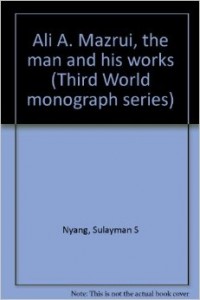 Finally, in writing the fifth point in this narrative about the man and his works, let us go back to the evolution of Professor Ali A. Mazrui. From Mombasa to Manchester to Columbia to Oxford and to Kampala, Ali has many numerous stops on the way to fame and glory. . This cultural and physical geography of Ali’s journey to a homeland other than his own Kenya has been the bone of debates among his colleagues and ideological foes. During the Cold War, Ali as a person was deeply wedded to the West and for this and other related reasons, three groups have been at logger-heads against Ali. One is the ideologically motivated African socialist.
His strong opposition to African dictatorship was evident in his earlier writings. Much has been said about his characterization of Kwame Nkrumah as a “Leninist Czar.” However some of his critics in his latter days were disturbed by his relationship with men like Muammar Gaddafi of Libya and Robert Mugabe of Zimbabwe. The second groups against Ali were theoretically motivated. In their view, Ali was a traditional scholar who was somehow allergic to statistical data and mathematical calculation as it is now celebrated among the behaviorists.
The third and final groups against Ali were politically and religiously inspired. These were either Zionist element who despised his association with the Arab/Palestinian cause and were determined to challenge and if possible humiliate him. As I have stated elsewhere, Professor Mazrui had the nerve and the verve to confront his foes. His pugilistic skills led one of our colleagues over thirty years ago to project him as the Muhammad Ali among African scholars. .
*Prof Sulayman S. Nyang is a professor and former chairman of the African Studies Department at Howard University in Washington, D.C]]>
Finally, in writing the fifth point in this narrative about the man and his works, let us go back to the evolution of Professor Ali A. Mazrui. From Mombasa to Manchester to Columbia to Oxford and to Kampala, Ali has many numerous stops on the way to fame and glory. . This cultural and physical geography of Ali’s journey to a homeland other than his own Kenya has been the bone of debates among his colleagues and ideological foes. During the Cold War, Ali as a person was deeply wedded to the West and for this and other related reasons, three groups have been at logger-heads against Ali. One is the ideologically motivated African socialist.
His strong opposition to African dictatorship was evident in his earlier writings. Much has been said about his characterization of Kwame Nkrumah as a “Leninist Czar.” However some of his critics in his latter days were disturbed by his relationship with men like Muammar Gaddafi of Libya and Robert Mugabe of Zimbabwe. The second groups against Ali were theoretically motivated. In their view, Ali was a traditional scholar who was somehow allergic to statistical data and mathematical calculation as it is now celebrated among the behaviorists.
The third and final groups against Ali were politically and religiously inspired. These were either Zionist element who despised his association with the Arab/Palestinian cause and were determined to challenge and if possible humiliate him. As I have stated elsewhere, Professor Mazrui had the nerve and the verve to confront his foes. His pugilistic skills led one of our colleagues over thirty years ago to project him as the Muhammad Ali among African scholars. .
*Prof Sulayman S. Nyang is a professor and former chairman of the African Studies Department at Howard University in Washington, D.C]]>
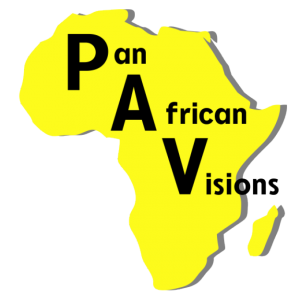


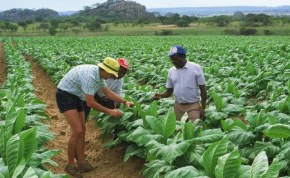
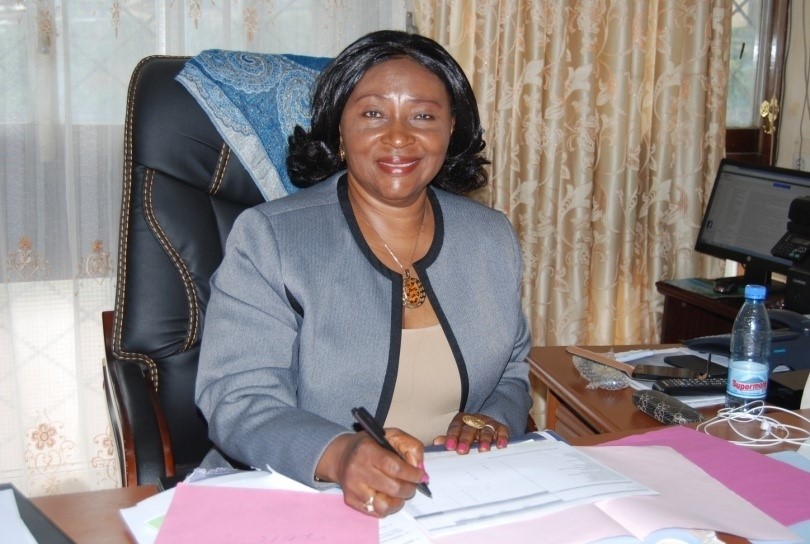
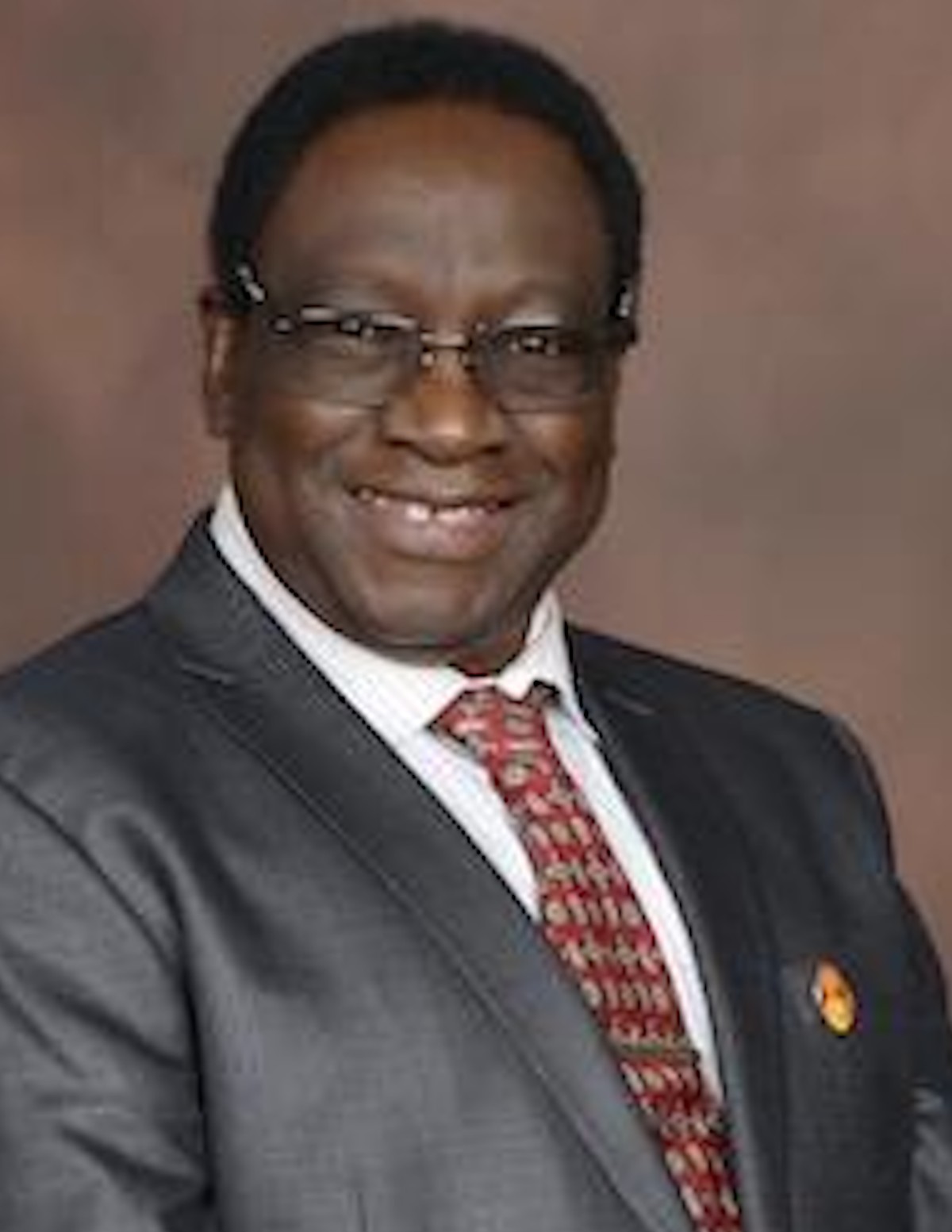
 Professor Ali A. Mazrui has left our world and now resides in what he once described as “After Africa.” In writing this brief essay on the man and his works, my mind is directed by a number of books written during his lifetime. Each book In his catalogue of essays and comments about Africa and the world corresponded with what I once talked about some thirty four years ago at the 1980 annual meeting of the African Studies Association. At that time, when Ali was being examined for immediate and global attention among Africanists, I suggested that, those who had the determination and the endurance to look at his essays and followed his train of thought, were destined to journey into what I called a galaxy of planets of insights and illumination. That expectation was first trigged by the first chain of books and essays now called Mazruiana.
In writing about Ali and his works, I intend here to do a number of things to shed some light about the Man who just left us in a moment of shock and sadness. Drawing from my Senegambian background, I am going to deploy our ethnic art of staging the biographies of individual members of society. In both the Wolof and Mandinka narratives about life and death, the age-grade system of profiling members of society proves to be instructive. Among both the Mandinka and the Wolof, the human being can be categorized through stages of development from the womb to the grave.
First of all, among these two groups, who are a part of minimally six most powerful ethnic groups that formed the demography and ethnography of the Gambia and by extension Senegal, the lowest level of membership and socialization is the Din-Din category for the Mandinka, and Haliyi for the Wolof; Kambano/Wahamande as the post adolescent and socialized member of the society; and finally, one evolves into the top level of membership in society. This is to say, you get elevated to the status of Kebba for Mandinka and Mak for Wolof.
By drawing from this scheme of identifying and describing members of society, one could here argue that Ali was an Afro-Arab who went through the stages of development noted almost all over the world by different languages and cultures in terms of measuring your contributions to the human conditions.The reason I decided to deploy the anthropological tools of these two groups from my area of origin is to translate how Ali is perceived by our people. Here is a man who grew up in colonial Kenya, where White power ruled and the English language became the badge of social assimilation and the dominant currency of power and exchange.
In analyzing Professor Mazrui, we can focus on him as a young teenager in Kenya and how his ethnic and cultural background combined to define his role and place in Kenyan society. Truth be told, both Ali and those who wrote about him have discussed his Arab roots and how this background explained how he felt about the history of his Swahili-speaking people in Mombasa. Five things need to be addressed in this narrative.
First of all, as a Din-din or Halibe, Ali was raised just like his Senegambian counterpart. Exposed to traditional African languages and cultures, Ali too became familiar with the mythologies and traditions of his people. Just as the Senegambian child learned to develop a command of Mandinka or Wolof, Ali too embraced Swahili and Arabic. Here is a parallelism between Ali and his Senegambian counterparts.
Exposed to two major civilizations and cultures, Ali and his Senegambian counterparts learned their mother tongues as well as those of their colonial masters. For the Senegambian who shared much in command culturally and linguistically, the different colonial masters put forward French and English as rival cultural tools in advancement of their political control. Because of the primacy of English, the Gambians therefore had more in common with Ali in terms of British colonial legacies.
Gambian economist and poet, Dr. Tijan Sallah of the World Bank, who had an opportunity to respond to Professor Ali A. Mazrui when he came to Howard University as the keynote speaker when Howard University conferred the lifetime achievement award to Professor Sulayman S. Nyang, reminded that audience and elsewhere how the Gambians defined themselves separately from their Senegalese cousins, who speak French and other similarly shared languages.
As the first point of analysis about Ali as a young Swahili-speaking Kenya, it must be asserted here that as a Din-Din or Halibe in the Senegambian narrative, he too faced the challenges of English and Arabic. Since both Ali and his Senegambian counterparts are products of Arabic and Islamic cultural training, one could argue here that Ali’s concept of triple heritage had its origins in this common pattern of socialization between two or more cultures. Affected by Islam and the Arabic language, Ali mentally travelled in the same domain as Senegalese scholar, Cheikh Anta Diop who came from a prominent Muslim scholarly family in Senegal. He too recognized the impact of religion in African thought, but his lines of reasoning were not necessary driven by Islamic metaphysics. Rather, for Diop, the ancient Egyptian legacies long lost by Africans warranted immediate retrieval.
What is striking to me is the fact that, when Ali went to Senegal to underscore the relevance and impact of his triple heritage in Africa, his visit to Touba, the spiritual center of the Muridiyya Sufi order, served as a major bone of contention. Indeed, no one can define Islam in Senegal without the murids as faithful companions of Senegambian Islam.
The second point that deserves attention in this analysis of Professor Ali A. Mazrui and his works is the transition from being a Din-Din/Halibe to being a Kambano/Wahamande in Kenyan society. In reading the writings of Ali and others who commented about his life and times in Kenyan society, one can see how British colonialism shaped his perception of the world. Learning the English language opened new doors of opportunity for him. The role of the British colonial governor in his education is part of his Kambano phenomenon. At that time, the young Mazrui, who spoke Swahili and had some familiarity with the Quranic Arab deployed in prayers and other related rituals, was now attracted by the British center of cultural gravity.
What needs to be emphasized here is that, Ali like his Senegambian counterpart s went through the colonial assimilation process. Certainly, his education in English and his engagement with an English spouse sent signals of cultural assimilation. This cultural development on the part of Ali Mazrui paralleled the life and times of Cheikh Anta Diop and Leopold Sedar Senghore in Senegal. Both in Senegal and in the Gambia, we had highly educated Africans who came back home with a white wife. As a Kambano/ Wahamande, who is sufficiently trained in the ways of the ancestors, both Ali and his Senegambian counterpart, went to the Western world prepared culturally and returned home undamaged.
In looking into the story of Professor Ali A. Mazrui, it is important for us to take a closer look at the third factor in this equation. What is this third factor? It deals with the transition from being a socialized adult in one’s culture to being exiled abroad as a Kebba. Ideally, Ali would have loved to spend his life in Africa. The transformations in his life rested in the hands of the political leadership of his country. Unlike many Kenyan, East African and African contemporaries, Ali was not politically connected to run for office in Kenya. Rather, history decreed that Ali would be a major literary force in Kenya and beyond, and his impact would be felt .not only through his speeches and lectures, but also in his relationships with the rulers and the ruled in Africa and beyond.
As a Kebba, Ali certainly played the role of a Kebba known to the Senegambians, but his Kebbaya (patriarchal influence) was limited by political circumstances in his life. Three things ought to be mentioned here briefly and in passing. One is the agony of rejection from his Kenyan leaders; the second is the uncertainty in Uganda, where Idi Amin made life dangerous and deadly; thirdly, there was the distance between family members in Kenya and pangs of divorce from his first wife. A combination of these developments made his Kebbaya real but difficult. .
In examining Professor Ali A. Mazrui and his works, there is the need to focus on the fourth factor that helped us define the Man and his achievements. Truth be told, Ali was a Din-din, who never lost his cultural grip in Mombasa society. As the African-American folks say, he “was a homeboy who mastered the lingo of the neighborhood and was widely celebrated by those who knew who he was.” Taking this as a point of departure, we can now argue here that, the late Professor from Kenya, who went to Uganda and made a name for himself, is now a factor to be recount with. Not only was he seasoned to negotiate relationships in Swahili and English, but he earned certain opportunities and privileges as a scholar, teacher, advisor and a colleague to the politically powerful and economically well-endowed.
Those who tried to study and measure the man must devote a greater deal of time and attention to his books, essays, lectures and speeches to navigate the planets in his galaxy. There are five things that beg for attention in this revaluation of Ali as Din-din, as Kambano and as a Kebba. Fate in its ways of paradoxes and ironies has taken Ali away from us. His mourning wife and living children, younger and older, are now charged with the delicate tasks of keeping memories alive. Those of us who are long-term friends and colleagues owed it to him to pass on his words honorably and magnificently.
Professor Ali A. Mazrui has left our world and now resides in what he once described as “After Africa.” In writing this brief essay on the man and his works, my mind is directed by a number of books written during his lifetime. Each book In his catalogue of essays and comments about Africa and the world corresponded with what I once talked about some thirty four years ago at the 1980 annual meeting of the African Studies Association. At that time, when Ali was being examined for immediate and global attention among Africanists, I suggested that, those who had the determination and the endurance to look at his essays and followed his train of thought, were destined to journey into what I called a galaxy of planets of insights and illumination. That expectation was first trigged by the first chain of books and essays now called Mazruiana.
In writing about Ali and his works, I intend here to do a number of things to shed some light about the Man who just left us in a moment of shock and sadness. Drawing from my Senegambian background, I am going to deploy our ethnic art of staging the biographies of individual members of society. In both the Wolof and Mandinka narratives about life and death, the age-grade system of profiling members of society proves to be instructive. Among both the Mandinka and the Wolof, the human being can be categorized through stages of development from the womb to the grave.
First of all, among these two groups, who are a part of minimally six most powerful ethnic groups that formed the demography and ethnography of the Gambia and by extension Senegal, the lowest level of membership and socialization is the Din-Din category for the Mandinka, and Haliyi for the Wolof; Kambano/Wahamande as the post adolescent and socialized member of the society; and finally, one evolves into the top level of membership in society. This is to say, you get elevated to the status of Kebba for Mandinka and Mak for Wolof.
By drawing from this scheme of identifying and describing members of society, one could here argue that Ali was an Afro-Arab who went through the stages of development noted almost all over the world by different languages and cultures in terms of measuring your contributions to the human conditions.The reason I decided to deploy the anthropological tools of these two groups from my area of origin is to translate how Ali is perceived by our people. Here is a man who grew up in colonial Kenya, where White power ruled and the English language became the badge of social assimilation and the dominant currency of power and exchange.
In analyzing Professor Mazrui, we can focus on him as a young teenager in Kenya and how his ethnic and cultural background combined to define his role and place in Kenyan society. Truth be told, both Ali and those who wrote about him have discussed his Arab roots and how this background explained how he felt about the history of his Swahili-speaking people in Mombasa. Five things need to be addressed in this narrative.
First of all, as a Din-din or Halibe, Ali was raised just like his Senegambian counterpart. Exposed to traditional African languages and cultures, Ali too became familiar with the mythologies and traditions of his people. Just as the Senegambian child learned to develop a command of Mandinka or Wolof, Ali too embraced Swahili and Arabic. Here is a parallelism between Ali and his Senegambian counterparts.
Exposed to two major civilizations and cultures, Ali and his Senegambian counterparts learned their mother tongues as well as those of their colonial masters. For the Senegambian who shared much in command culturally and linguistically, the different colonial masters put forward French and English as rival cultural tools in advancement of their political control. Because of the primacy of English, the Gambians therefore had more in common with Ali in terms of British colonial legacies.
Gambian economist and poet, Dr. Tijan Sallah of the World Bank, who had an opportunity to respond to Professor Ali A. Mazrui when he came to Howard University as the keynote speaker when Howard University conferred the lifetime achievement award to Professor Sulayman S. Nyang, reminded that audience and elsewhere how the Gambians defined themselves separately from their Senegalese cousins, who speak French and other similarly shared languages.
As the first point of analysis about Ali as a young Swahili-speaking Kenya, it must be asserted here that as a Din-Din or Halibe in the Senegambian narrative, he too faced the challenges of English and Arabic. Since both Ali and his Senegambian counterparts are products of Arabic and Islamic cultural training, one could argue here that Ali’s concept of triple heritage had its origins in this common pattern of socialization between two or more cultures. Affected by Islam and the Arabic language, Ali mentally travelled in the same domain as Senegalese scholar, Cheikh Anta Diop who came from a prominent Muslim scholarly family in Senegal. He too recognized the impact of religion in African thought, but his lines of reasoning were not necessary driven by Islamic metaphysics. Rather, for Diop, the ancient Egyptian legacies long lost by Africans warranted immediate retrieval.
What is striking to me is the fact that, when Ali went to Senegal to underscore the relevance and impact of his triple heritage in Africa, his visit to Touba, the spiritual center of the Muridiyya Sufi order, served as a major bone of contention. Indeed, no one can define Islam in Senegal without the murids as faithful companions of Senegambian Islam.
The second point that deserves attention in this analysis of Professor Ali A. Mazrui and his works is the transition from being a Din-Din/Halibe to being a Kambano/Wahamande in Kenyan society. In reading the writings of Ali and others who commented about his life and times in Kenyan society, one can see how British colonialism shaped his perception of the world. Learning the English language opened new doors of opportunity for him. The role of the British colonial governor in his education is part of his Kambano phenomenon. At that time, the young Mazrui, who spoke Swahili and had some familiarity with the Quranic Arab deployed in prayers and other related rituals, was now attracted by the British center of cultural gravity.
What needs to be emphasized here is that, Ali like his Senegambian counterpart s went through the colonial assimilation process. Certainly, his education in English and his engagement with an English spouse sent signals of cultural assimilation. This cultural development on the part of Ali Mazrui paralleled the life and times of Cheikh Anta Diop and Leopold Sedar Senghore in Senegal. Both in Senegal and in the Gambia, we had highly educated Africans who came back home with a white wife. As a Kambano/ Wahamande, who is sufficiently trained in the ways of the ancestors, both Ali and his Senegambian counterpart, went to the Western world prepared culturally and returned home undamaged.
In looking into the story of Professor Ali A. Mazrui, it is important for us to take a closer look at the third factor in this equation. What is this third factor? It deals with the transition from being a socialized adult in one’s culture to being exiled abroad as a Kebba. Ideally, Ali would have loved to spend his life in Africa. The transformations in his life rested in the hands of the political leadership of his country. Unlike many Kenyan, East African and African contemporaries, Ali was not politically connected to run for office in Kenya. Rather, history decreed that Ali would be a major literary force in Kenya and beyond, and his impact would be felt .not only through his speeches and lectures, but also in his relationships with the rulers and the ruled in Africa and beyond.
As a Kebba, Ali certainly played the role of a Kebba known to the Senegambians, but his Kebbaya (patriarchal influence) was limited by political circumstances in his life. Three things ought to be mentioned here briefly and in passing. One is the agony of rejection from his Kenyan leaders; the second is the uncertainty in Uganda, where Idi Amin made life dangerous and deadly; thirdly, there was the distance between family members in Kenya and pangs of divorce from his first wife. A combination of these developments made his Kebbaya real but difficult. .
In examining Professor Ali A. Mazrui and his works, there is the need to focus on the fourth factor that helped us define the Man and his achievements. Truth be told, Ali was a Din-din, who never lost his cultural grip in Mombasa society. As the African-American folks say, he “was a homeboy who mastered the lingo of the neighborhood and was widely celebrated by those who knew who he was.” Taking this as a point of departure, we can now argue here that, the late Professor from Kenya, who went to Uganda and made a name for himself, is now a factor to be recount with. Not only was he seasoned to negotiate relationships in Swahili and English, but he earned certain opportunities and privileges as a scholar, teacher, advisor and a colleague to the politically powerful and economically well-endowed.
Those who tried to study and measure the man must devote a greater deal of time and attention to his books, essays, lectures and speeches to navigate the planets in his galaxy. There are five things that beg for attention in this revaluation of Ali as Din-din, as Kambano and as a Kebba. Fate in its ways of paradoxes and ironies has taken Ali away from us. His mourning wife and living children, younger and older, are now charged with the delicate tasks of keeping memories alive. Those of us who are long-term friends and colleagues owed it to him to pass on his words honorably and magnificently.

